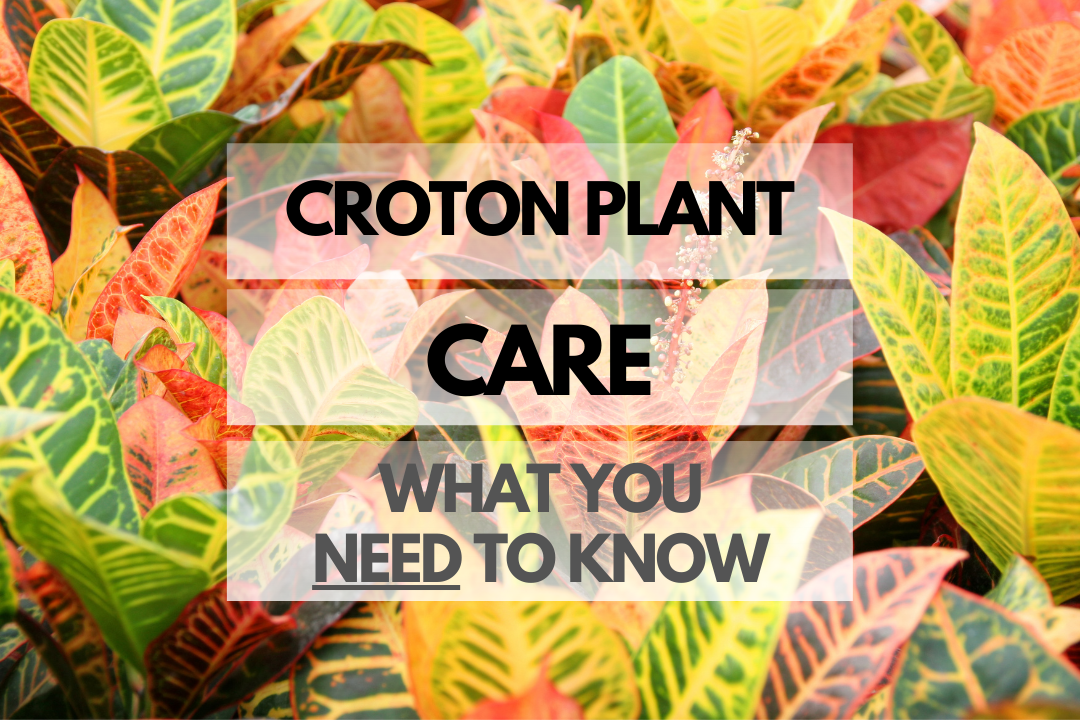Welcome to the ultimate guide for taking care of your beautiful Croton Plant! In this article, we’ll be exploring everything you need to know to keep your plant healthy and vibrant. So, let’s dive in and cultivate our green thumbs together!
Croton Plant Care Guide
From sunlight requirements to common problems, we’ll cover all the bases to ensure your Croton Plant thrives. So let’s get started, shall we?
Quick Reference Table: Caring for Croton Plant
| Aspect | Requirement |
|---|---|
| Sunlight | Bright, indirect light |
| Soil | Well-draining, rich in organic matter |
| Watering | Keep the soil consistently moist, but not soggy |
| Pruning | Trim to maintain shape and remove dead leaves |
| Temperature | 60-85°F (15-29°C) |
Croton Plant Sunlight: Do They Need It and How Much?
Croton Plants love bright, indirect sunlight. Place your plant near a window that receives plenty of sunlight, but avoid direct rays that can scorch the leaves. If your Croton Plant’s leaves start to lose their vibrant colors, it’s a sign they need more light.
Croton Plant Soil Tips
These plants thrive in well-draining soil rich in organic matter. A mixture of peat moss, perlite, and compost works well. Ensure your pot has drainage holes to prevent waterlogging, which can harm your plant’s roots.
Croton Plant Watering and Frequency
Keep the soil consistently moist, but not soggy. Water your Croton Plant when the top inch of soil feels dry to the touch. Be careful not to overwater, as this can lead to root rot.
Pruning Croton Plant Properly
Prune your Croton Plant to maintain its shape and remove any dead or yellowing leaves. Use clean, sharp pruning shears, and make cuts just above a leaf node. This will encourage bushier growth and keep your plant looking its best.
Optimal Croton Plant Temperature: Can They Tolerate the Cold?
Croton Plants prefer temperatures between 60-85°F (15-29°C). They’re sensitive to cold drafts and sudden temperature changes, so keep them away from drafty windows and air conditioners. If temperatures drop below 60°F (15°C), your plant may lose leaves and experience stunted growth.
Common Croton Plant Problems
Leaf Drop
Leaf drop is often caused by sudden temperature changes, drafts, or underwatering. To avoid this issue, maintain a consistent temperature and water your plant regularly.
Mealybugs
Mealybugs are small, white insects that can infest your Croton Plant, causing leaves to yellow and drop. Remove them by wiping the leaves with a cotton swab dipped in rubbing alcohol, and treat the plant with an insecticidal soap or neem oil.
Spider Mites
Spider mites are tiny pests that can cause your Croton Plant’s leaves to become discolored and eventually fall off. Increase humidity around the plant and treat with insecticidal soap or neem oil to combat these pests.
Croton Plant Outdoors vs Indoors
Croton Plants can be grown both indoors and outdoors. Here’s a quick pros and cons list to help you decide:
| Location | Pros | Cons |
|---|---|---|
| Indoors | Controlled environment, unaffected by weather | Requires more attention to lighting and humidity |
| Outdoors | Natural light and humidity, can grow larger | Sensitive toextreme temperatures and pests |
Best Pots for Croton Plant
Choose a pot with drainage holes to prevent waterlogging. Terracotta pots are a popular choice because they’re porous and allow excess moisture to evaporate. However, any pot material will work as long as it provides proper drainage. Just make sure to choose a pot that’s large enough to accommodate your Croton Plant’s growth!
Croton Plant Facts
Croton Plant Benefits
- Air purifying: Croton Plants help to clean the air by removing harmful pollutants such as benzene and formaldehyde.
- Attractive foliage: Their colorful and vibrant leaves add a touch of beauty and brightness to any space.
- Low maintenance: With proper care, Croton Plants are relatively easy to maintain, making them perfect for both beginner and experienced gardeners.
Growth Rates: How Fast Do They Grow?
Croton Plants typically grow at a moderate pace, with a growth rate of around 6-12 inches per year. Given the right care and conditions, they can reach a height of 3-6 feet indoors and up to 10 feet outdoors.
Croton Plant Lifespan
With proper care, a Croton Plant can live for many years, sometimes even decades. Ensuring that it receives the right amount of light, water, and nutrients will help prolong its lifespan.
Are Croton Plants Safe?
Croton Plants are toxic if ingested by humans or pets. Their sap can cause skin irritation, so it’s essential to handle them with care and keep them away from children and pets.
Croton Plant Flowers
Although not the main attraction of Croton Plants, they do produce small, inconspicuous flowers. The flowers are generally not significant and tend to go unnoticed due to their less showy appearance compared to the stunning foliage.
Croton Plant Types and Varieties
Mammy Croton
The Mammy Croton is known for its slender, twisted leaves with vibrant shades of red, yellow, and green. This variety is compact and well-suited for indoor container gardening.
Petra Croton
Petra Croton is one of the most popular varieties, featuring large, oval leaves with bold veins and a mix of red, orange, yellow, and green hues. It makes a stunning focal point for any indoor or outdoor space.
Zanzibar Croton
Zanzibar Croton has long, narrow leaves that come in a mix of green, yellow, red, and purple shades. This variety has a more upright and slender growth habit, making it perfect for smaller spaces.
Croton Plant Pros and Cons
| Pros | Cons |
|---|---|
| Stunning, colorful foliage | Toxic to humans and pets |
| Air purifying properties | Requires specific care conditions |
| Low maintenance | Can be sensitive to environmental changes |
Croton Plant Cost
The cost of a Croton Plant can vary depending on the size and variety. Smaller plants typically range from $10 to $20, while larger, more established plants can cost anywhere from $30 to $60 or more.
Where to Buy Croton Plant
Croton Plants can be purchased at local nurseries, garden centers, or online retailers. Be sure to select a reputable seller and check for healthy, well-established plants with vibrant foliage.
Is Croton Plant Propagation in Water Possible?
Yes, Croton Plant propagation in water is possible. Simply take a cutting with a few leaves, remove the lower leaves, and place the cutting in a container of water. Change the water every few days, and in a few weeks, you should see roots begin to develop. Once the roots are established, transfer the cutting to soil.
Additional Resources
- Missouri Botanical Garden – Croton Plant
- Croton Lovers Facebook Group
- National Gardening Association – Croton Plant
FAQfor Croton Plant Care
Are Croton Plants toxic to cats?
Yes, Croton Plants are toxic to cats. Ingestion of the plant can cause vomiting, diarrhea, and other symptoms. Keep the plant out of reach of your feline friends.
Are Croton Plants toxic to dogs?
Yes, Croton Plants are toxic to dogs. Ingestion can lead to symptoms such as drooling, vomiting, and diarrhea. Keep the plant away from your canine companions.
Are Croton Plants toxic to kids?
Yes, Croton Plants are toxic to humans, including kids. Ingestion can cause symptoms such as nausea, vomiting, and skin irritation. Keep the plant out of reach of children.
How tall do Croton Plants get?
Croton Plants can grow up to 3-6 feet indoors and up to 10 feet outdoors, depending on the variety and care conditions.
Can Croton Plants live outside?
Yes, Croton Plants can live outside in suitable climates. They thrive in warm, humid environments and need protection from cold temperatures and frost.
Are Croton Plants poisonous?
Yes, Croton Plants are poisonous if ingested and can cause skin irritation from contact with their sap. Handle them with care and keep them away from children and pets.
How often should I water my Croton Plant?
Water your Croton Plant when the top inch of the soil feels dry. Be sure to provide well-draining soil and avoid overwatering, as this can lead to root rot.

